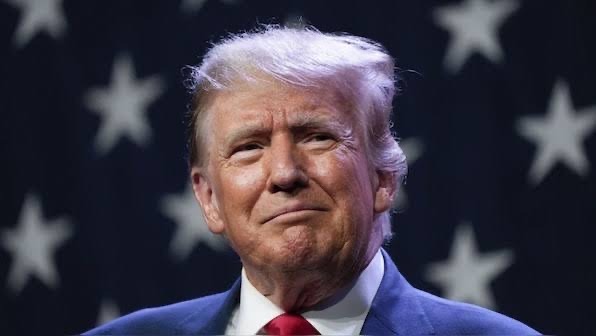Tel Aviv [Israel], January 1: After over a year of intense fighting on seven fronts, Israel’s conflict has expanded to Lebanon and Iran. The war, which erupted following Israel’s retaliation against Hamas’s October 7 attack, continues with no resolution in sight as 2024 ends.
Though Israel faced international criticism for its refusal to adopt a ceasefire, it has received strong backing from the United States. A statement from the U.S. Department of State affirmed its support, emphasizing that the U.S. stands with Israel in its defense against terrorism while seeking lasting peace and stability across the region.
October 7 Attack:
Hamas, the largest militant group in Palestine, launched a massive terror attack on Israel on October 7, 2023. Over 1,200 people, including foreign nationals, were killed, with many women assaulted and over 250 hostages taken. Israel has labeled the attack as the “largest massacre of Jews since the Holocaust.” In retaliation, Israel launched a counteroffensive against Hamas in Gaza, resulting in over 45,000 deaths, mostly civilians, according to Gaza’s health ministry.
Domestic Divisions and International Pressure:
Within Israel, there has been growing domestic pressure to bring back hostages, with divisions emerging in Prime Minister Netanyahu’s war cabinet. Some ministers and opposition figures have called for a ceasefire and hostage release, while far-right members advocate for continued military operations.
External Factors: Iran and Its Proxies:
The conflict also saw the involvement of external actors. Hezbollah, backed by Iran, attacked Israel from Lebanon, while the Houthis from Yemen launched assaults on Israeli-linked vessels in the Red Sea, disrupting global shipping. In response to the escalating violence, Qatar mediated a week-long ceasefire in late November 2023, allowing humanitarian aid into Gaza. During this period, some hostages were released.
In a major escalation, Iran launched hundreds of missiles at Israel in retaliation for the killing of top Hamas and Hezbollah leaders. Israel responded with airstrikes targeting Iran’s missile and drone facilities.
High-Profile Eliminations:
Israel has successfully eliminated several key militant leaders. In July, Hamas chief Ismail Haniyeh was killed in Tehran, followed by Hezbollah leader Hassan Nasrallah in Beirut in September. By October, Hamas leader Yahya Sinwar was also killed, marking significant setbacks for both groups.
Humanitarian Concerns:
The war has led to severe humanitarian crises, particularly in Gaza, where over 45,000 people, mostly women and children, have been killed. The UN has accused Israel of obstructing aid to Gaza, while the International Court of Justice and the International Criminal Court have condemned Israeli actions as potentially amounting to war crimes. Amid widespread destruction, nearly 85% of Gaza’s population has been displaced, facing dire shortages of food, water, and medical supplies.
International Reactions and EU Recognition:
Some European countries, including Spain, Norway, and Ireland, have formally recognized Palestine, adding to the pressure on Israel. The international community continues to call for a ceasefire and increased humanitarian access.
The Trump Factor:
The potential return of Donald Trump to the White House could influence the conflict’s trajectory. Trump, who previously brokered the Abraham Accords, has been vocal in his support for Israel. As President-elect, Trump has issued stern warnings to Hamas regarding the hostages, vowing severe consequences if they are not released before he assumes office in January 2025. His presidency is expected to bring further unpredictability to the Middle East crisis.
As the conflict extends into 2025, the situation remains volatile, with no clear end in sight. The stakes are high, both for the region and for global stability.
Tel Aviv [Israel], January 1: After over a year of intense fighting on seven fronts, Israel’s conflict has expanded to Lebanon and Iran. The war, which erupted following Israel’s retaliation against Hamas’s October 7 attack, continues with no resolution in sight as 2024 ends.
Though Israel faced international criticism for its refusal to adopt a ceasefire, it has received strong backing from the United States. A statement from the U.S. Department of State affirmed its support, emphasizing that the U.S. stands with Israel in its defense against terrorism while seeking lasting peace and stability across the region.
October 7 Attack:
Hamas, the largest militant group in Palestine, launched a massive terror attack on Israel on October 7, 2023. Over 1,200 people, including foreign nationals, were killed, with many women assaulted and over 250 hostages taken. Israel has labeled the attack as the “largest massacre of Jews since the Holocaust.” In retaliation, Israel launched a counteroffensive against Hamas in Gaza, resulting in over 45,000 deaths, mostly civilians, according to Gaza’s health ministry.
Domestic Divisions and International Pressure:
Within Israel, there has been growing domestic pressure to bring back hostages, with divisions emerging in Prime Minister Netanyahu’s war cabinet. Some ministers and opposition figures have called for a ceasefire and hostage release, while far-right members advocate for continued military operations.
External Factors: Iran and Its Proxies:
The conflict also saw the involvement of external actors. Hezbollah, backed by Iran, attacked Israel from Lebanon, while the Houthis from Yemen launched assaults on Israeli-linked vessels in the Red Sea, disrupting global shipping. In response to the escalating violence, Qatar mediated a week-long ceasefire in late November 2023, allowing humanitarian aid into Gaza. During this period, some hostages were released.
In a major escalation, Iran launched hundreds of missiles at Israel in retaliation for the killing of top Hamas and Hezbollah leaders. Israel responded with airstrikes targeting Iran’s missile and drone facilities.
High-Profile Eliminations:
Israel has successfully eliminated several key militant leaders. In July, Hamas chief Ismail Haniyeh was killed in Tehran, followed by Hezbollah leader Hassan Nasrallah in Beirut in September. By October, Hamas leader Yahya Sinwar was also killed, marking significant setbacks for both groups.
Humanitarian Concerns:
The war has led to severe humanitarian crises, particularly in Gaza, where over 45,000 people, mostly women and children, have been killed. The UN has accused Israel of obstructing aid to Gaza, while the International Court of Justice and the International Criminal Court have condemned Israeli actions as potentially amounting to war crimes. Amid widespread destruction, nearly 85% of Gaza’s population has been displaced, facing dire shortages of food, water, and medical supplies.
International Reactions and EU Recognition:
Some European countries, including Spain, Norway, and Ireland, have formally recognized Palestine, adding to the pressure on Israel. The international community continues to call for a ceasefire and increased humanitarian access.
The Trump Factor:
The potential return of Donald Trump to the White House could influence the conflict’s trajectory. Trump, who previously brokered the Abraham Accords, has been vocal in his support for Israel. As President-elect, Trump has issued stern warnings to Hamas regarding the hostages, vowing severe consequences if they are not released before he assumes office in January 2025. His presidency is expected to bring further unpredictability to the Middle East crisis.
As the conflict extends into 2025, the situation remains volatile, with no clear end in sight. The stakes are high, both for the region and for global stability.


